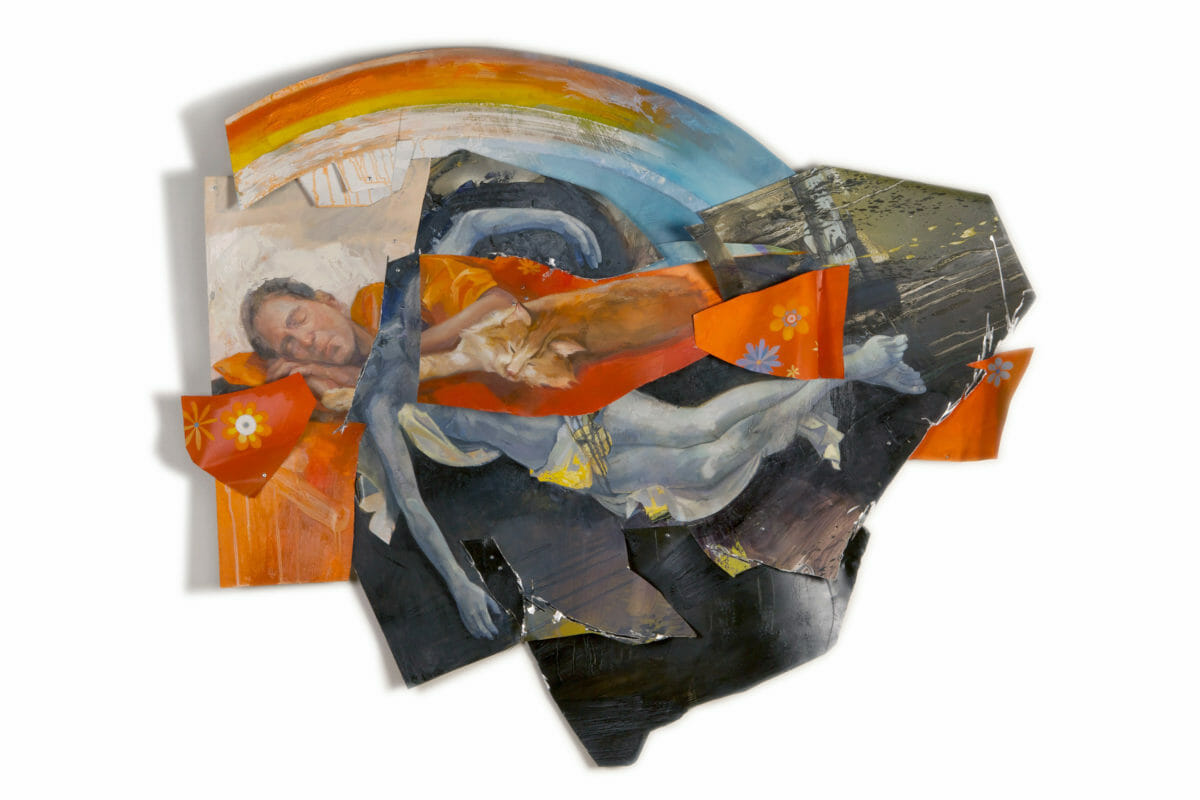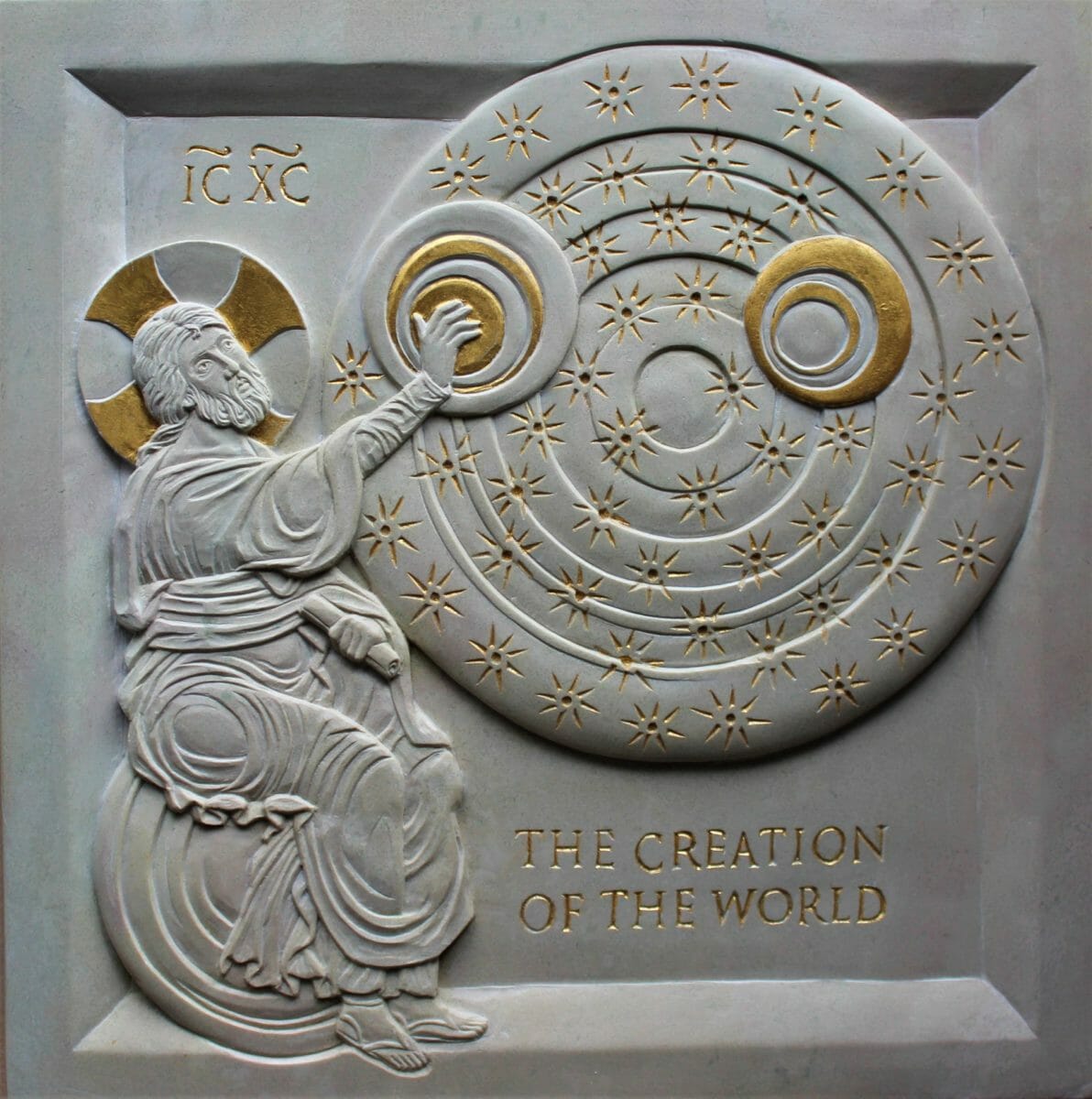Similar Posts
Last September, I was invited by Wycliffe College at the University of Toronto to speak on a public panel as a prelude to the annual massive art event called Nuit Blanche. Wycliffe college is a somewhat conservative Anglican school, and on this panel were three artists who identify as Christian and who were asked to discuss the relationship between art and faith.
Besides myself, a liturgical artist and icon carver, the second panelist was Gloria Kim, a well received director who has created a series for television as well as several shorts and is currently working on a feature film called Queen of the Morning Calm about a young immigrant sex worker and her daughter. The final panelist was Phil Irish, an award winning contemporary painter who’s had several shows in Canadian Galleries and who makes large bold collages.

I was a bit apprehensive at the outset for this discussion, as I knew what gulf I need to cross in order to communicate the reality of traditional liturgical practice to a public who is accustomed to museums and gallery shows, to the now ubiquitous notion that art exists for arts sake. In the end it was precisely the difficulty and challenge of crossing that divide which made this the most enriching experience possible. The clear vision of two distinct world views, two distinct philosophies of art comes across quite vividly through this exchange in which we cover everything from the concept of art itself, its value as a cultural proposition, all the way to the discussion of motivation, reception and the function which our creations have in the world.
What underlies the discussion is ultimately this profound difference between a liturgical and non-liturgical tradition and how these two approaches to Christianity perceive cultural manifestation and objects. The liturgical and traditional vision seems ultimately to be one of celebration, the creation of places of participation and communion, whereas the contemporary and more protestant ethos appears (for those protestants who want to make art which is more than entertainment of decoration) as a form of questioning. It embraces the modern provocative and iconoclastic approach to culture, seeing art and culture as a challenge to forms and traditions. It is an opening up of meaning with uncertainty and questioning rather than the celebration and participation in meaning and identity.
The video is a bit more than an hour long. It is worth watching the very beginning, where I show some of the works of each artist, but after 7 minutes it becomes audio only.


Jonathan, stop doing Ecumenism. Only Orthodoxy is true. Christian icons are sacred, and there is no need for a dialogue with those who make profane secular art, only a monologue, where the name of Jesus Christ is boldly proclaimed. Enough of green hair, enough of calling prostitution something PC. God hates sin.
Thank you, Andrew!
Ecumenism? You consider speaking with people as if they are human beings created in the image of God and not our slaves for us to “monologue” to ecumenism? I am sure you have already brought at least 100 people to the Orthodox faith. Right? How about this, Andrew? You do it your way, get up on your soapbox and monologue to the “profane” sinners. Tell them about how God hates sin, and don’t forget to also thank God that you are not like these other people. You do your thing and we can let God judge our respective trees by their fruits. In the meantime, since you have the world to convert, I am sure there are better things for you to do besides posting comments on youtube videos.
amen!
I live in Toronto and i was very interested in Peggy’s invitation to participate in Nuit Blanche next year?
I love the work of a Ukrainian, Sergii Radkevych..here is a quote from him:
” My urban interventions hold the balance between contemporary murals and graffiti. They shift the meaning of the space they occupy. My subjects originate from religious iconography and combine simplified religious symbols with geometrical forms to arrive at contemporary spiritual abstract form. I seek out public and private spaces which have lost their function or have an undefined meaning and transform and revitalizes them into spiritual signal spaces…” Also the Greek born Antonia Fikos..It would be trans-formative to come upon larger than life Angels as travel companions in our bus shelters… Open to discussing…implementing…for 2019 Nuit Blanche
A wise matushka once told us (as we made our way through our college years) that we should not be afraid of studying modern art and literature, but rather, we should do as the Israelites did when they left Egypt: take the gold with us and leave the slavery behind; that we could indeed glean the gold from modern books, music, and art without fear. This has served me well in my life. As Bishop Ware said (paraphrasing), we can say where the Holy Spirit is but we cannot say where the Holy Spirit is not. We are fishers of men, and we are to be salt and light in the world. Just because someone is not Orthodox doesn’t mean they don’t have something to share with the world.
That reality of “liturgical art” as basically communal and celebratory is something I am coming to understand little by little. As part of our conversion to Orthodoxy, my family has been building our own “bright corner,” a dedicated space where we can pray and worship together as a family in our home. I have learned more this way, about beauty and prayer, than I could have ever learned from any number of books on the subject. Recently, I started doing some woodworking (I’ve made furniture in the past) — just little things like icon stands. I think I’m going to try my hand next at some wooden candlesticks.
There is a certain rightness about making something which is going to be used in worship. I feel like I finally know what art is for. Thank you for what you do, Jonathan. Beauty will save the world.
It’s very brave of you to engage artists like this, Jonathan, I salute you! It means a lot for people to see who does this kind of work. If we don’t share our work with everyone, then we are making cultic images, and always preaching to the choir. The most insightful criticism and questions come from my secular friends. If they are moved by an icon I’ve painted, I really have done something important. It surprises me and surprises them.